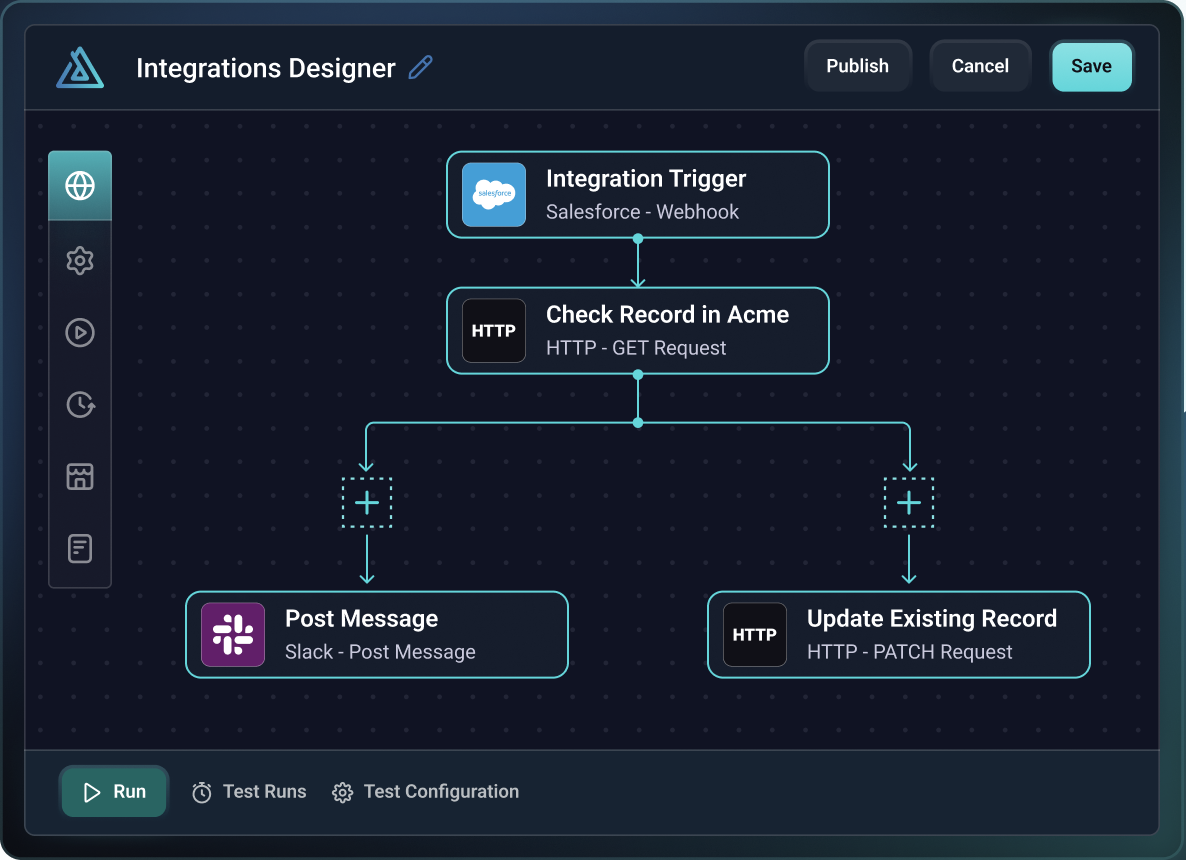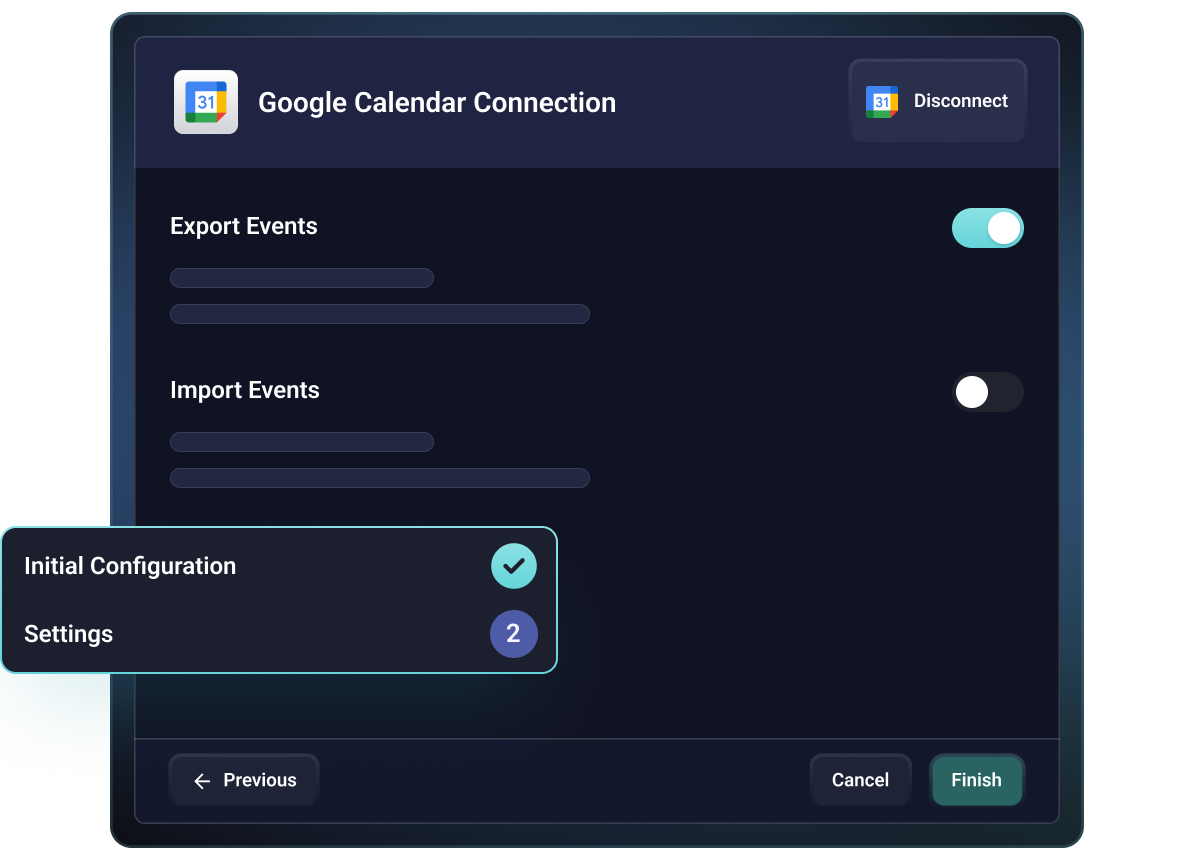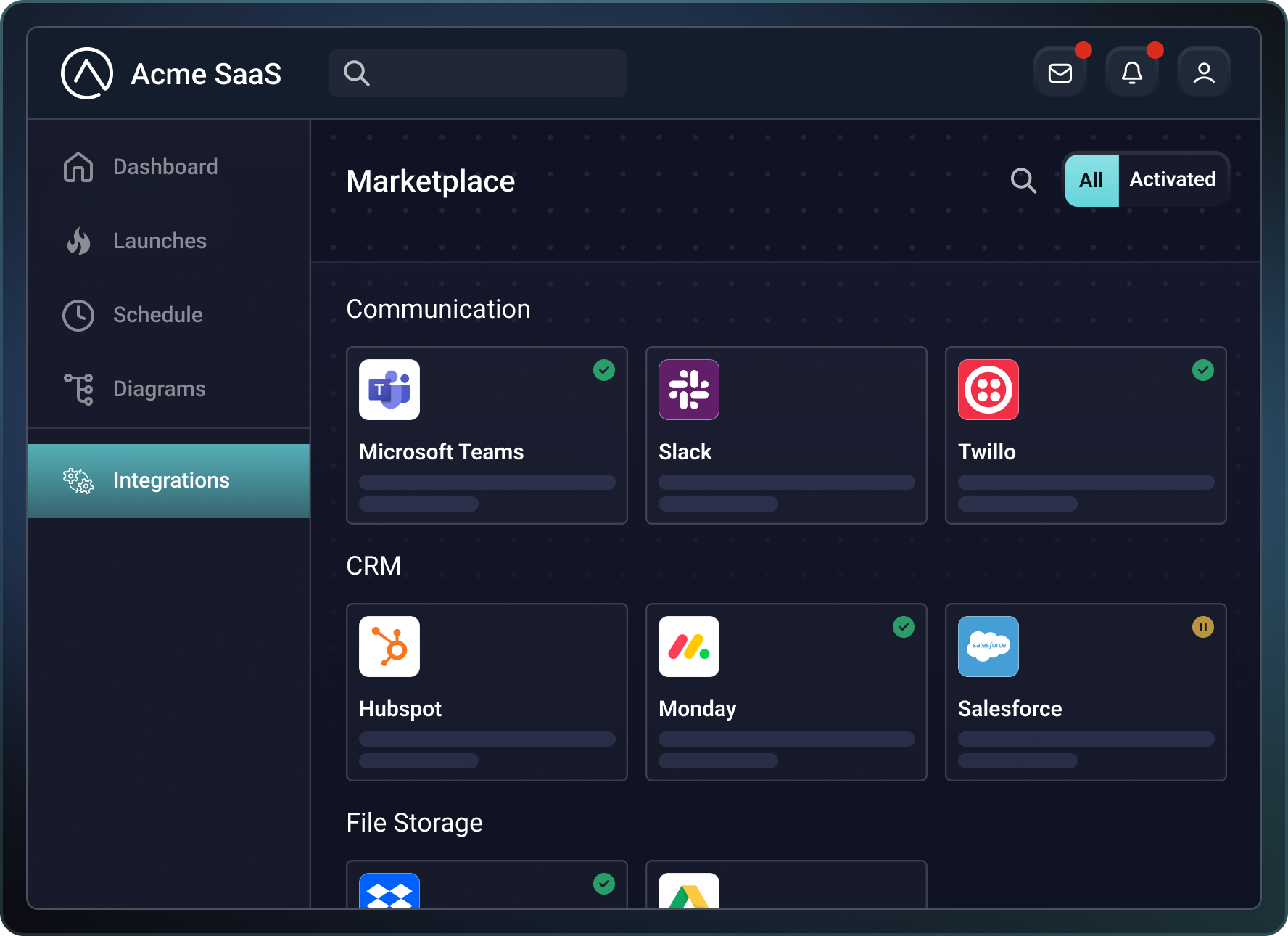How Do I Productize Integrations?
A productized integration is built as a core feature of your product, rather than as a one-off solution for a specific customer. Productizing an integration typically involves market and user research, product design, development, testing, deployment, and ongoing monitoring and management.
Benefits of productizing integrations
Productized integrations offer several advantages for your SaaS application, including:
- Prospective customers are more likely to choose your application if it integrates with the other systems they use.
- Integrations reduce the "time to value" for new customers during onboarding, as they quickly see their data reflected in your application.
- Existing customers are more likely to remain engaged ("sticky"), reducing churn and making your application a core part of their workflow.
- Integrations create upsell opportunities. Depending on your commercial model, you can leverage integrations to increase contract value.
Steps to productize integrations
To productize integrations, follow these steps:
Conduct user and market research
Interview current and prospective customers to identify which other applications and services they use. Determine which systems are most valuable to integrate with.
Build your integration
Develop an integration between your app and the other apps you've identified.

Create a configuration experience
Design an intuitive configuration experience to streamline deployment. Configuration should be straightforward for end users, minimizing the need for your team's intervention.

Create an integration marketplace
Add an integration marketplace to your application so customers can self-serve integrations.

Customer stories
See Customer Stories for interviews with Prismatic customers describing how they implemented productized integrations and integration marketplaces in their applications.